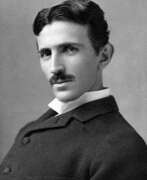Inventors 19th century


Rudolph Ackermann the Elder was a German and British inventor and publisher, founder of Ackermann & Co.
He was the son of a master saddler, learned the craft and in time achieved a high art in carriage making, designing carriages and coaches. In 1794 Ackermann opened a printing and picture store in London, which quickly became popular. The following year he opened a printing shop at 96 Strand - thus began the printing business of the Ackermann dynasty, which lasted for over two hundred years.
Between 1808 and 1810. Ackermann published the first of his sumptuous plate books, The Microcosm of London, with beautiful hand-colored aquatints. This work established his reputation as a book publisher, and he subsequently published many more elaborate illustrated books. Ackermann also gained widespread fame for the periodical he founded in 1809, the Repository of Art, Literature, Commerce, Manufactures, Fashion, and Politics. This popular journal, published monthly until 1828, contained articles and illustrations of various kinds, especially on fashion, social and literary news.
Ackermann's business flourished, and by the end of 1820 he had established offices in Central and South America. Continuators of the Ackermann dynasty were in the printing business until the end of the twentieth centur


Louis Carrogis, better known as Carmontelle was a French artist, garden designer, architect, playwright and inventor.
Carmontelle was of simple origins but versatilely gifted. He wrote several plays and three novels, and created portraits of historical figures. He became famous for his painting of little Mozart at the clavier. In the service of Louis-Philippe I, Duke of Orléans, he was responsible for the theatrical performances for the family as stage designer and stage director.
Carmontelle is the planner and designer of one of the earliest examples of a French landscape garden in Paris, now known as Parc Monceau. In designing the garden, Carmontel rejected many of the fashionable trends in landscape design at the time, drawing inspiration from Japanese pleasure gardens and insisting on incorporating illusion and fantasy.
Carmontelle is also credited as the inventor of animated images. Translucent tape with landscapes depicted on it was slowly rolled from one roll to another against a backdrop of daylight, thus creating the illusion of walking through a garden.


Sherman Foote Denton was an American naturalist, inventor, illustrator, and writer.
Denton was one of the best later natural history artists. He served as an artist for the Smithsonian Institution's U.S. Fish Commission and was commissioned by the Smithsonian Institution to create the book Game Fish of New York. And the annual reports of the Fish and Game of New York State for 1895-1909 featured 99 species of freshwater and marine fish, as well as a number of other items, including lobsters, oysters, ring-necked pheasant, and Virginian deer. These have been published in both book and folio form. Denton also developed a method of mounting fish that preserved their lifetime color.
Along with his brothers Shelley Wright and Robert Winsford, Denton founded the Denton Brothers Butterflies Company, which sold butterfly specimens. Sherman invented and patented in 1901 the mounting of scale specimens on a white plaster tablet under glass instead of the traditional mounting.


Johann George Hossauer was a German jewelry artist, entrepreneur and inventor.
Hossauer began working at the bronze factory of Werner & Mietke in Berlin and trained under the jeweler Henri de Ruolz. In 1819, King Friedrich Wilhelm III of Prussia financially supported the factory, which was managed by Hossauer. This factory produced articles of platinum, gold, silver, bronze, gilded and silvered copper and employed up to 100 people. At one of the first trade exhibitions in Berlin, the master received a gold medal for his work, and in 1826 the king granted him the title of jeweler of His Majesty the King.
As a prominent Berlin jeweler, Hossauer executed several orders of the Prussian court, including the Pour Le Merite and the Order of St. John, and also participated in the creation of the Russian Order of St. Vladimir and the Hanoverian House Order of St. George. He created silver table sets for Prussian princes and fulfilled other prestigious orders, produced jewelry, medals, and numerous pieces of gold and silverware.
In 1845, Hossauer sold his patent for the electroplating process to Werner von Siemens, and ten years later he was appointed a judge at the World's Fair in Paris.


Carl August Liner was a Swiss painter, graphic artist, designer and inventor. He is sometimes referred to as Senior to distinguish him from his son, Carl Walter Liner, who was also a well known painter.
In addition to his paintings, he designed postage stamps and posters and did illustrations. It was this work that provided most of his income. He was also an amateur inventor and holds the patent for an early version of the single-axis mower.


Samuel Thomas von Soemmering was a German physician, anatomist, anthropologist, paleontologist, physiologist and inventor.
He studied medicine at Göttingen, where he received his doctorate, and in the same year became professor of anatomy at Kassel, then at Mainz. Among Soemmering's contributions to biology are the discovery of the macula in the retina of the human eye, studies of the brain, lungs, nervous system, and embryonic malformations, and he published many papers in the fields of neuroanatomy, anthropology, and paleontology. He was the first to give a reasonably accurate account of the structure of the female skeleton.
Soemmering also worked on fossil crocodiles and pterodactyls, which at the time were called ornithocephalians. In addition, Soemmering dabbled in chemistry, astronomy, philosophy, and various other fields of science. Among other things, he investigated the refinement of wines and sunspots, and designed a telescope for astronomical observations. In 1809, Soemmering developed a sophisticated telegraph system based on electrochemical current, which is now preserved in the German Science Museum in Munich.

















